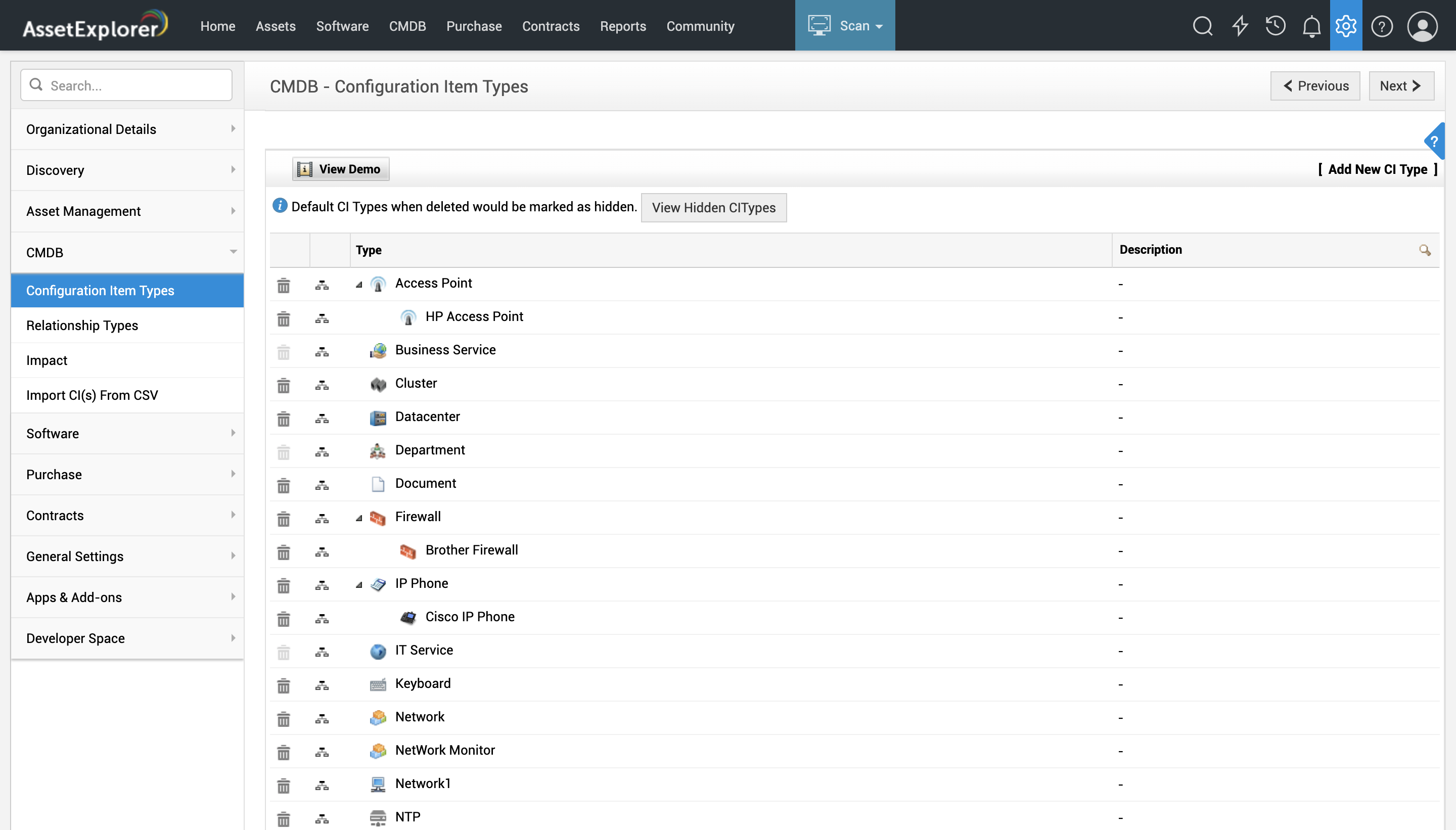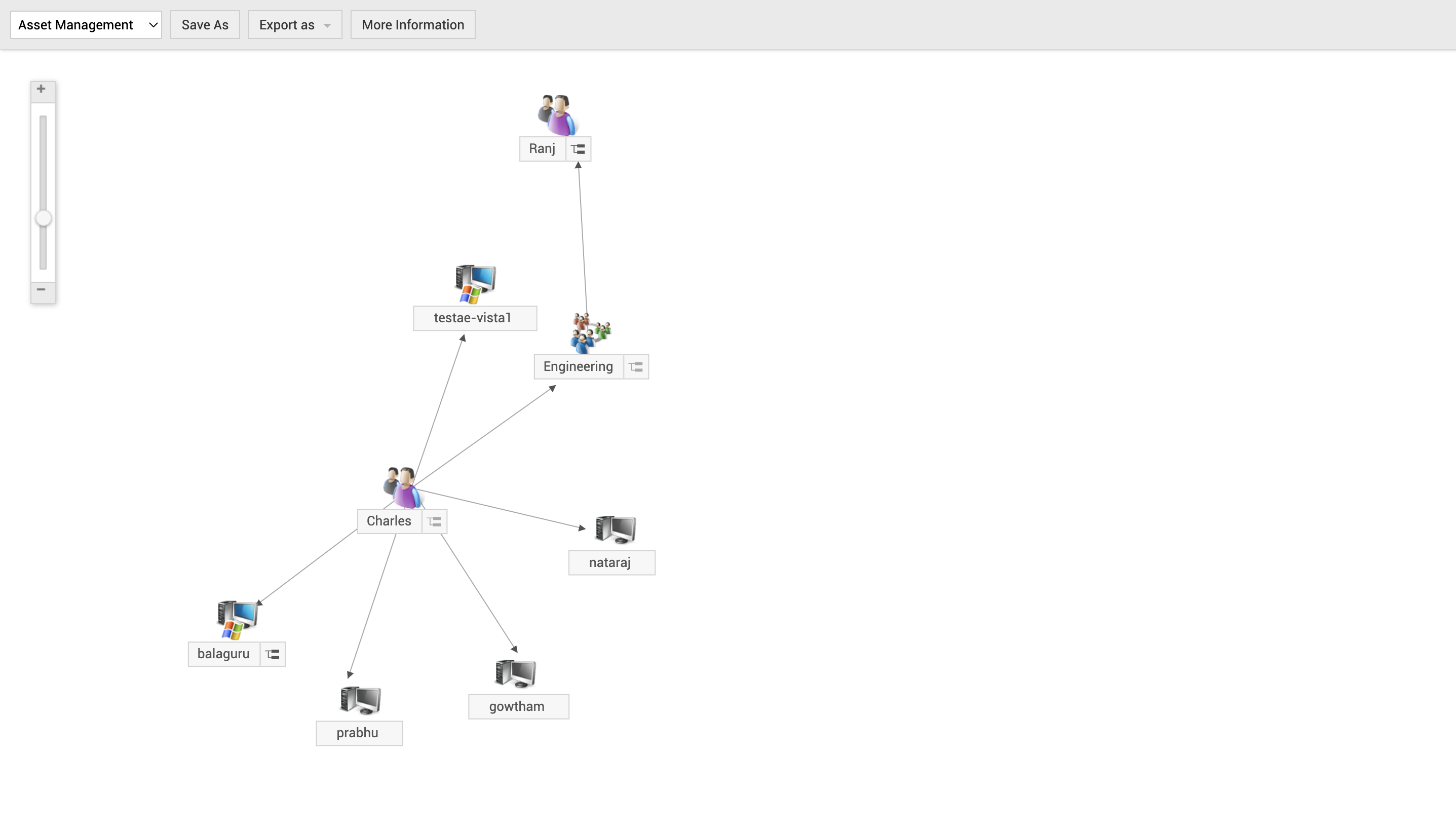Configuration Management Database
Configuration Management Database (CMDB) is a centralized repository that stores information on all the significant entities in your IT environment. The entities, termed as Configuration Items (CIs) can be hardware, the installed software applications, documents, business services and also the people that are part of your IT system. Unlike the asset database that comprises of a bunch of assets, the CMDB is designed to support a vast IT structure where the interrelations between the CIs are maintained and supported successfully.
Configuration Item Types (CI Types)
The CIs within the CMDB are categorized into specific Configuration Item Types (CI Types). Each CI Type is represented with Attributes and Relationshipsthat is unique for the CIs classified under it. Attributes are data elements that describe the characteristics of CIs under the CI Type. For instance, the attributes for CI Type Server can be Model, Service Tag, Processor Name and so on. Relationships, on the other hand, denote the link between two CIs that identifies the dependency or connection between them.
A CI Type can form a hierarchical structure by further drilling down to Sub Types. Each Sub Type inherits the Attributes and Relationships from the parent CI Type.
Relationship Map
The Relationship Map is uniquely designed to provide the ability to understand the dependencies between the CIs. The relationships between the CIs are discovered automatically while populating the CIs into the CMDB through Active Directory or LDAP import, performing Windows Domain Scan or Network Scan. The Relationship Map helps to analyze the impact caused by the CI on a business service, and identify the root cause of the impact, thus establishing appropriate measures to gradually eliminate the perpetual issues faced by your organization.
Features
- Tracks and manages all the Configuration Items (CIs) in the IT environment.
- Establish and maintain relationships between CIs.
- Ability to add default Attributes and Relationships to a CI Type.
Benefits
- Track all your CIs and their details in a centralized repository – The CMDB.
- With the help of the relationship map, the impact caused by a CI on other CIs, the root cause of the impact can be identified and appropriate measures can be established to eliminate the issue.

